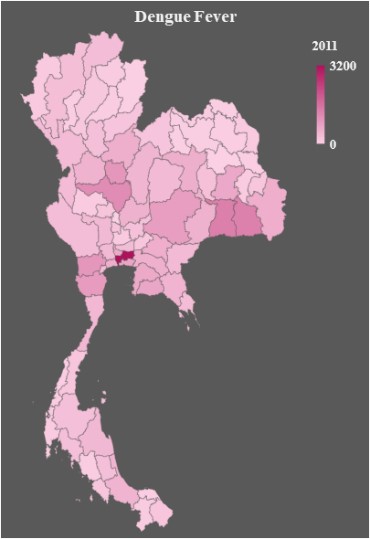Health Risks and Disease Outbreaks during Floods in Thailand
Research conducted on skin diseases during floods in Thailand has identified eczema as the most common skin problem, often occurring alongside allergies or asthma. Factors such as high humidity, contaminated water, and unhygienic environments contribute to increased bacterial colonization on eczematous macerated skin.
Floods in Thailand can lead to various diseases, including:
-
Superficial infections: Traumatic skin injuries and underlying conditions like diabetes or immune suppression increase the risk of superficial infections after a flood.
-
Conjunctivitis: Bacterial contamination in water can cause eye infections, presenting symptoms such as redness, eye pain, burning, and tearing.
-
Respiratory infections: Exposure to floodwaters and rain can result in respiratory infections like cold, flu, and pneumonia. These diseases can be contracted through inhaling or coming into contact with infected drops of mucus, saliva, or phlegm. Symptoms include fever, headache, cough, and fatigue.
-
Hand, foot, and mouth disease: This disease can be transmitted through direct contact with body fluids from the nose and throat, such as saliva. Indirect transmission can occur through contact with contaminated toys, objects, or the hands of parents or child minders, as well as contaminated food and drinking water.
-
Cholera: Ingesting contaminated food or water can cause cholera, leading to severe watery diarrhea, nausea, vomiting, and diarrhea. Individuals with hypertension and impaired fasting glucose are at higher risk. In some cases, people may consume leftover free food distributed by the Thai government after floods.
-
Leptospirosis: Various animals, including rodents, dogs, livestock, and wildlife, can spread leptospirosis. Heavy rain can contaminate soil, streams, and water sources with animal urine.
Other diseases such as dengue fever, diarrhea, measles, and acute outcomes related to high stress and exertion during floods have also been observed. Increased mental health stress and negative health effects are linked to overcrowding
Figure shows distribution of cases found in 2011 affected by leptospirosis and dengue fever,

